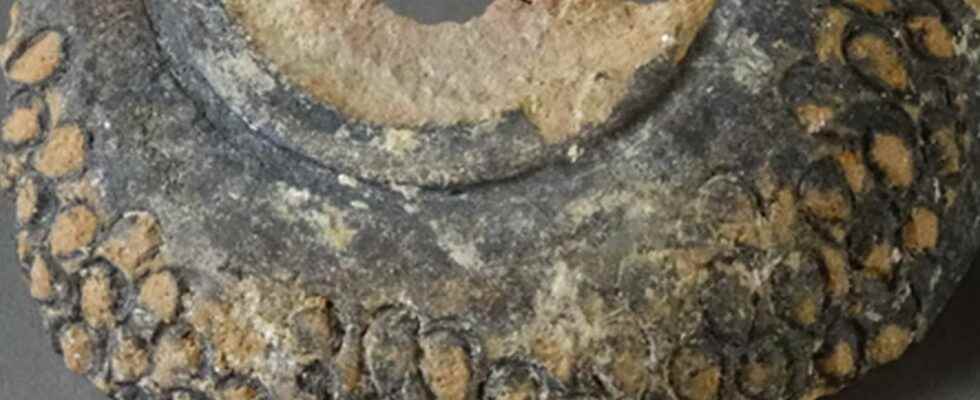What did small spherical containers from 12th century Jerusalem contain?and century ? Residues of animal fat, colors and heavy metals suggest that these ceramics had multiple uses, some of which were explosive!
You will also be interested
[EN VIDÉO] Archaeology: the bodies of two men excavated north of Pompeii Excavations carried out at the beginning of the year in Pompeii revealed two new victims of Vesuvius’ past wrath. Discover the images of the work carried out by the archaeologists on site. © Pompeii Sites
Ceramic containers dating from the IXand in the 15thand century in the Middle East are commonly found during excavations archaeological. Those who interested a research team that publish an article in PLoS One are containers whose base is conical, the body spherical and which have a narrow neck ending in a small opening. The analysis of residues of this type of remains has already shown that these ceramics, sometimes decorated, could for example contain medicinal mixtures, foodstuffs such as honey and wine and precious liquids such as ink and perfumes.
From medicine to war
Several archaeologists have in the past suggested that the thicker-walled containers were used as pomegranates by hand. Isolated analyzes of residues have been carried out on several remains of containers but no consensus has really been established as to their function. The authors of the recently published study analyzed the remains of four containers from Jerusalemdating from XIand and XIIand centuries and attributed to the Mamluk culture.
The second ceramic contained a fermented medicinal substance made from vegetable oil and animal fat
According to the residues present on the shards, one of the ceramics probably contained oils and the second contained a fermented medicinal substance made from vegetable oil and animal fat. The third was probably sealed with coniferous resin and probably also contained a colored and scented medicinal substance composed in particular of mercury and sulfur.
On the fourth shard, the authors also detected the presence of sulfur, which was incorporated into ancient medicinal substances, but was also one of the components of thermal, incendiary and explosive materials.
The use of sulfur in conjunction with fats and oils was used to make incendiary weapons as early as the Vand century BC and its use is reported in containers egyptians of the XIIand century which are believed to have been explosive devices. Mercury residues were also detected on this fourth shard and although this element can be incorporated into medicinal mixtures, there is also a residue of mercury fulminate which is an explosive. The analyzes also revealed the presence of nitrates and phosphorus, which may be residues of incendiary and explosive mixtures.
The fourth shard is the fragment of an explosive device
Although the authors cannot exclude that these residues result from medicinal substances or perfumes, they rather suggest that the fourth shard is the fragment of an explosive device. They indeed explain that the thick walls of this vessel would indeed have provided the resistance necessary to contain increasing pressure before detonation. In addition, the container was undecorated, and its shape and weight are optimal for crafting a hand grenade. This hypothesis is finally consistent with the historical archives which report the use of grenades by Saladin’s army during the siege of Jerusalem in 1187.
Interested in what you just read?
